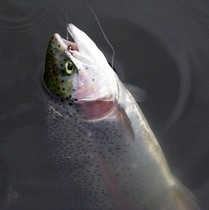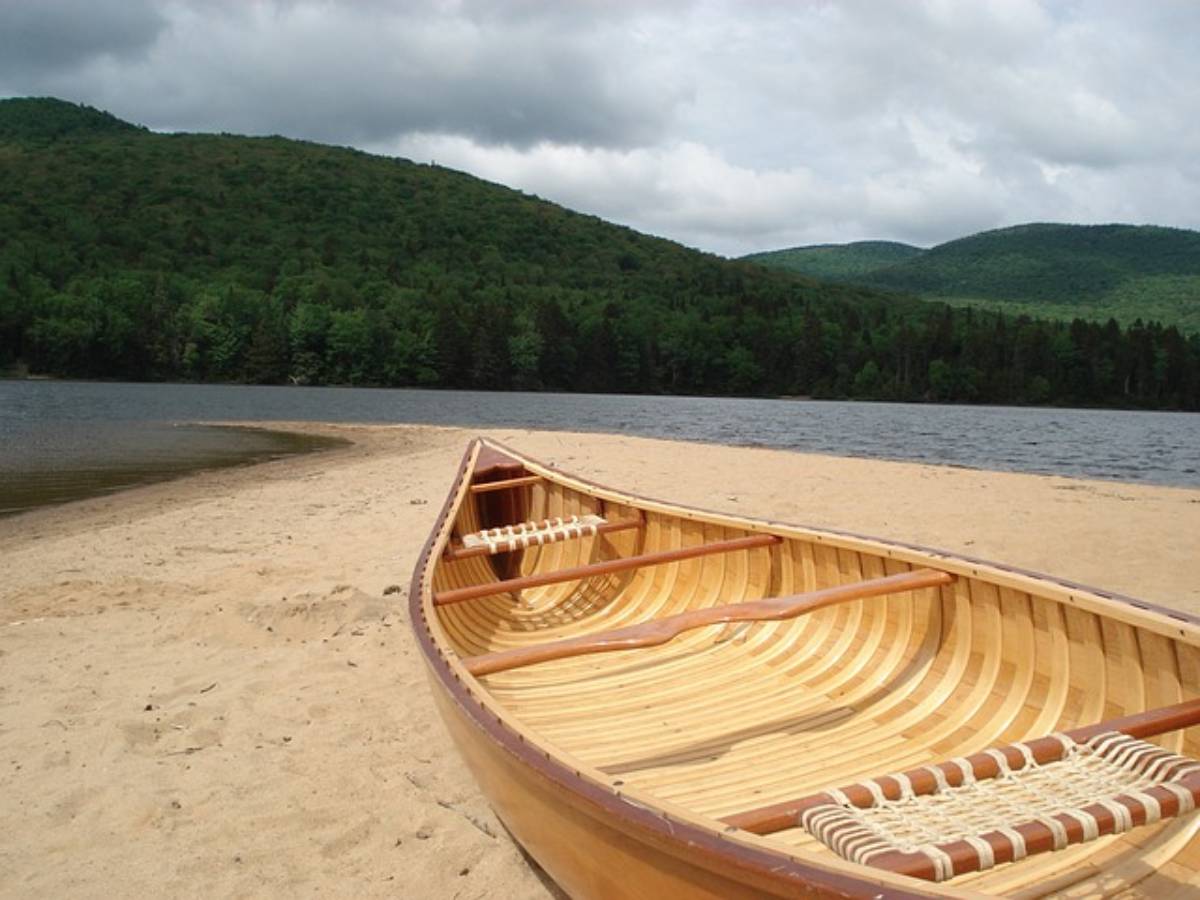For starters, it’s very easy to identify a rainbow trout. A colorful band of different hues — including blue, green and pink — can be found on the sides. The colors run all the way along the fish from its head to its tail.
However, landing a large rainbow trout can be a challenge for even the most experienced angler. They put up a good fight when hooked and provide you with the thrill of a good catch.
Before you decide to fly fish for rainbow trout, there are a few things that you need to know in order to be successful.
Where To Find Rainbow Trout
Rainbow trout can be found in most waters of North America. They can also be fished in England and New Zealand, among other countries.
Their natural habitat is lakes, rivers and streams that are deep, clear and cool. These beautiful fish are not usually found in waters where the temperature is over 75 degrees Fahrenheit. A gravel or rock bottom is preferred.
Look for rainbow trout in natural cover, deep pools, near fallen logs, large rocks and bridge abutments, as they like to rest and feed in places where they feel secure. They enjoy fast-moving water, so fish at the head of waterfalls and rapids.
Rainbows feed on baitfish and insects, as well as fish eggs, mayflies and insect larvae. One of their favorite meals is salmon eggs, and they often share the same water at spawning time. When in larger lakes, they feed on smelt, crustaceans and sculpins.
How To Catch Rainbow Trout
When fishing for large rainbow trout, use weighted flies that will sink into the depths. A great time to catch rainbow trout is early morning or evening and on days that are overcast.
Rainbow trout can be very aggressive, but they are choosy about their diet. It’s best to learn to tie your own trout flies so they will resemble natural trout food in the area where you are fishing. The flies should look as exact as possible to insects, larvae and other natural food sources.
 Remember that wet flies are flies that sink. Dry trout flies can resemble hatches that are emerging or insects that float on the water’s surface. Steamers also work well for rainbow trout and look like a minnow that is just below the water’s surface. Nypmhs resemble insect larvae and are also great for rainbow trout fly fishing.
Remember that wet flies are flies that sink. Dry trout flies can resemble hatches that are emerging or insects that float on the water’s surface. Steamers also work well for rainbow trout and look like a minnow that is just below the water’s surface. Nypmhs resemble insect larvae and are also great for rainbow trout fly fishing.
The 2 main things you need to keep in mind when fly fishing for rainbow trout are:
- The fly must be true to life.
- The fly must be clean.
These beautiful trout will not strike on anything that smells bad (this includes sunscreen), so be sure to keep the flyline clean. Environmentally friendly fishing line cleaners are available at most bait and tackle shops.




